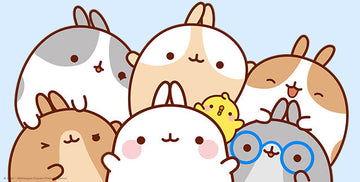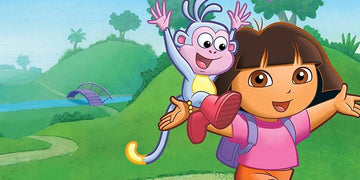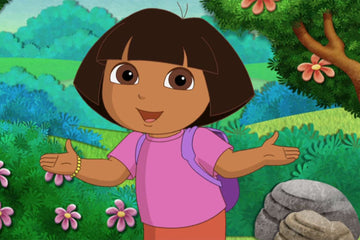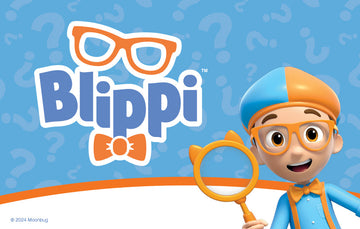Ever wondered about the origins of your favorite animated superhero squad, Teen Titans Go!? Well, you're in for a treat! This article will take you on a journey through the vibrant history of these dynamic teen superheroes.
Unveiling the Creation of Teen Titans Go
Delving deeper into the animated realm, let's explore how the dynamic superhero squad of Teen Titans Go came to life.
The Origin Story
Category-defining creativity marked the origin of Teen Titans Go. Legends of the animation industry, Aaron Horvath, and Michael Jelenic, are the brains behind this iconic show. Setting sights high, they aimed to revolutionize the animation scene. Their vision was to create a show that broke away from the typical, serious superhero genres present at the time of its creation.

Stringent research and development went into each character's design. The creators wanted to build a character-driven story, putting emphasis on the development and interaction of the Teen Titans. Their main concern centered not on the Titans' superhero profession, but on their seemingly normal teenage lives, giving the show its unique spin.
Interesting Facts About the Creation Process
The creation process blooms with fascinating facts. For starters, the series was initially developed as a comedic deviation from another hit show, 'Teen Titans,' which was more dramatic and action-oriented. The enchanting humor of Teen Titans Go set it apart from its predecessor, making it a hit among both children and adults alike.
Another remarkable fact to note - Horvath and Jelenic had to face quite a bit of resistance when first proposing a comedic superhero series. It wasn't an approach everyone supported initially, considering the dominant success of more serious superhero series. However, their perseverance paid off, and the result was a smashing hit colorful animated series that continues to garner fans to this date.
As a final note for this section, and certainly not the least intriguing, much of the voice cast of the original ‘Teen Titans’ series reprised their roles in Teen Titans Go. This continuity not only retained the essence of the original characters but also presented them in an entirely new light. Thus, adding yet another layer of depth to these iconic teen heroes' storyline. This stood testament to the creators' dedication to preserving a connection with the show's roots while seamlessly blending in their innovative ideas.
Delving into the Characters of Teen Titans Go
Carrying forward from the creative process, let's shift focus to the integral elements of "Teen Titans Go" – its characters. Anchoring both the heart and humor of the series, these charismatic figures are worth a close examination.
A Closer Look at the Main Characters
Originally, five heroes formed the core team of Teen Titans, creating the framework for Teen Titans Go. These include Robin, Starfire, Cyborg, Raven, and Beast Boy. Each brought something distinct to the table, making the team truly diverse.

Robin – The team leader, possessing strategic skills but lacking superpowers. His determination, martial arts talent, and sharp wit became his signature strengths.
Starfire – An alien princess bestowed with flight and energy-projection abilities. Despite her combat prowess, she's renowned for her innocent personality and unfamiliarity with Earth customs.
Cyborg – A fusion of man and machinery, granting him super strength and advanced technological capacities. His jovial and outgoing nature lends the team a positive spirit.
Raven – The daughter of a demon, her powers lie in dark magic, telekinesis, and teleportation. Raven's introverted and sarcastic demeanor often adds an interesting twist to team dynamics.
Beast Boy – The green-skinned shape-shifter, capable of morphing into any animal. His quirky personality and relentless humor make him a truly unique character.
The Evolution of Supporting Characters
Over time, Teen Titans Go transformed not just its main characters but also introduced a complex tapestry of supporting characters. These secondary figures came with their unique quirks, enriching the series' narrative depth.
One notable breakout character is Silkie, Starfire's pet alien worm, who became a fan favorite with his charming simplicity and bizarre antics. Another important addition was Jinx, a former villain turned Teen Titans ally, who added an extra layer of complexity to the storyline with her transition.
Other characters such as Terra, Aqualad, and Bumblebee have also contributed significantly to the ever-evolving narrative of Teen Titans Go. Some characters even transcended their supporting roles, experiencing expanded storylines and episodes dedicated solely to them, thereby solidifying their inclusion in the rich universe of Teen Titans Go.
However, while providing intricate character details, the article remains anchored to its core – an exploration of the beloved animated series, Teen Titans Go.
Understanding the Humor in Teen Titans Go
Understanding the unique brand of humor in Teen Titans Go involves dissecting the show's comedic style and satirical elements. Let's delve into these components.
The Unique Comedy Style
While recalling the characters populating the Teen Titans Go world, one cannot overlook the distinct humor flavor that sets this series apart. The humor roots are character-based, further amplifying the idiosyncrasies of the pack. Humor doesn't descend upon the Titans with serious missions; instead, it pervades their day-to-day lives, the too-ordinary-to-be-superheroes activities. The Titans face mundane tasks like dodging chores, addressing snooze alarms, and navigating pizza toppings debates, with hilarity woven into proceedings. The show uses a lot of nonsense humor, illogical scenarios, and slapstick, all wrapped up in a frenetic pace that amplifies the absurdity.

Take the episode "Legs," for instance. It revolves around the fascination of Robin, Cyborg, and Beast Boy over Raven's recently unveiled lower body. Such an environmentally ridiculous scenario that places too much importance on legs constructs a unique playful charm.
Exploring the Show's Satirical Elements
Delving into Teen Titans Go's humor necessitates appreciating its satirical elements. Despite its bright-colored characters and childlike ambiance, the series often embeds a cleverly grown-up satire that plays with the superhero genre stereotypes.
Teen Titans Go doesn't shy away from referencing pop culture and mocking its contemporaries. Take the episode "The Return of Slade" that cleverly satirizes the nostalgic displeasure of original Teen Titans fans towards Teen Titans Go for its perceived lack of seriousness. The episode presents the Titans enthusiastically awaiting the return of Slade, a prominent supervillain, whose off-screen defeat is quickly dismissed, leading to their pursuit of a clown for hire.
Moreover, the witty dialogue writing, layered with humor and sarcasm, emerges from the series' keen observation of character behavior and dynamics.
In essence, the humor in Teen Titans Go extends beyond cheap gags, providing fans a refreshing, comedic superhero narrative. The series merges hysterical humor and satire to offer audiences an entertaining watch that keeps them coming back for more.
Pivotal Moments in the Teen Titans Go Timeline
Following the introduction of character establishments and humor dynamics, the journey of Teen Titans Go comprises several significant events. Let's delve into the exploration of standout episodes and dramatic plot twists that contributed to the narrative's evolution.
Iconic Episodes and Their Impact
In the diverse catalog of Teen Titans Go! episodes, a few stand out as both fan favorites and show-defining installments. "Pie Bros," the season 1 episode, sets the series' tone early by showcasing the Teen Titans' camaraderie, accentuated by a plot driven by Beast Boy's birthday and the dilemma of friendship versus pie.
"Colors of Raven," another significant episode, offers deep insights into Raven's personality. It splits her into five versions, each representing a different emotion. This not only enriches her character but also enhances understanding of what she brings to the team dynamic.
"The Night Begins to Shine," meanwhile, indulges us in an aesthetically unique throwback world dominated by 80s style animation and music – a beloved gem for fans.
Major Plot Twists in the Series
The series isn't shy of springing surprises, making unexpected plot twists a quintessential part of Teen Titans Go. One of the earliest such surprises occurs when Terra, initially introduced as a potential team member, is revealed as a villain – and Beast Boy's love interest.
In "Staring at the Future," the series presents a time jump, revealing an adult version of the Titans. It's not just the character design changes that surprise viewers, but the impressive narrative shift.
Finally, arguably the most significant twist happens with the unexpected return of the original Teen Titans in a multi-episode arc, culminating in "Teen Titans Go vs Teen Titans," where both versions of the squad meet.
Notably, in all twists, Teen Titans Go does a remarkable job of blending surprises with its signature humor and character-driven storylines, enhancing the show's richness and entertainment value.
A Deep Dive into the Animation Style of Teen Titans Go
Delving deeper than the narrative surface, let's take a moment to explore the distinct art style and animation techniques of Teen Titans Go.
Aesthetics and Visual Elements
Teen Titans Go, with its colorful, vibrant visual aesthetic, literally pops off the screen. The character models, while simpler than their counterparts in comics or past animated iterations like the 2003 series, exhibit an irrepressible, infectious energy often associated with more traditional cartoons or even newspaper comic strips.
Take Robin, the team leader, for instance. His traditional heroic costume in red, green and yellow hues is reminiscent of the classic superhero design. But his exaggerated, large expressive eyes provide a comical angle, reflecting the lighter tone of the show. Similarly, Raven, shrouded in a dark robe and obscured expressions, still showcases moments of visual comedy with her devil-may-care, nonplussed reactions.
The series, moreover, isn't shy about deploying highly saturated colors, particularly for explosive or pivotal moments. Instances like Starfire's energy blasts and Beast Boy's transformations stand out in high-intensity green and pink, respectively, punctuating key scenes with dynamic visual flair.
Animation Techniques Used in the Series
When it comes to animation, Teen Titans Go employs a distinctive minimalist style, creating fluidity through limited motion. The character designs, while straightforward, are highly expressive, deftly capturing moods and emotions. Subtle gestures and movements are amplified, underscored by the liberal use of squash and stretch animation principles. For example, Beast Boy contorting into various animals, or Cyborg transforming parts of his body into weapons, demonstrate creative implementations of shape-changing animation.
Further, Teen Titans Go leverages cutaway gags - a device used often in comedic animation. These brief, often nonsensical, interludes aid in highlighting the absurd humor of the series. Notably, the episode "40%, 40%, 20%" is filled with such moments, showcasing a surreal dance routine by Cyborg that's wildly disproportionate to the rest of the episode's narrative.
Storyboard-driven animation processes of Teen Titans Go have cultivated a fun, engaging visual playground. Sharp, fast-paced editing combined with exaggerated, expressive character motions, all wrapped up in a palette of eye-popping colors, add to a captivating viewing experience that consistently charms audiences, young and old alike.
Teen Titans Go: Impact and Influence in Pop Culture
The impact and influence of Teen Titans Go on popular culture can be divided between the show's reception and the power of its crossover episodes.
The Show's Reception by the Public and Critics
Despite its comedic and non-traditional approach to the superhero genre, Teen Titans Go has not always seen eye-to-eye with critics. Several reviewers, turned off by the series's irreverent humor and departure from conventional superhero narrative, gave it mixed reviews. However, backlash from the press didn't keep the show down.
Children and casual viewers fell in love with the bright colors, comedic turns, and fast-paced storytelling. They laughed at the constant jabs at superhero traditions and admired the Titans' unique approach to crime-fighting. These viewers catapulted the show past criticisms to rank as one of Cartoon Network's most popular offerings. The unusual charm and smart comedy of Teen Titans Go led to its longevity, highlighting its power to influence younger generations and casually alter the perception of superhero narratives.
Influential Crossover Episodes
One of Teen Titans Go's most significant feats was its adventurous take on crossover episodes. For instance, the episode "TTG v PPG" combined the manic energies of Teen Titans Go and The Powerpuff Girls in a spectacular collision of colors and comedy. This instance attracted substantial attention to both shows, showing the potential of children’s animation to transcend usual boundaries and create exciting, unconventional narratives.
Another example is the “Night Begins to Shine” special event, where the Titans ventured into a vibrant, 80's aesthetic world taken straight from a synth-wave dream. This unique storytelling move drew in older audiences familiar with the '80s style and music, extending the show's reach and cultural impact beyond its regular viewer base.
Being bold, Teen Titans Go used crossover episodes as gateways to new worlds, storylines, and possibilities, showcasing the endless versatility of the animated genre. It encouraged collaboration and innovation, shaping its unique footprint in popular culture.
Conclusion
So there you have it. Teen Titans Go isn't just another run-of-the-mill animated series. It's a show that's broken boundaries with its unique humor and character-driven storytelling. It's made a mark with its vibrant visuals and innovative animation techniques. Despite the divided reception, it's won hearts with its comedic take on crime-fighting. And let's not forget those crossover episodes that have only amplified its reach and influence. It's safe to say Teen Titans Go has left an indelible mark on popular culture. And as long as superheroes continue to fascinate us, I believe Teen Titans Go will remain a beloved fixture in our TV lineups.





